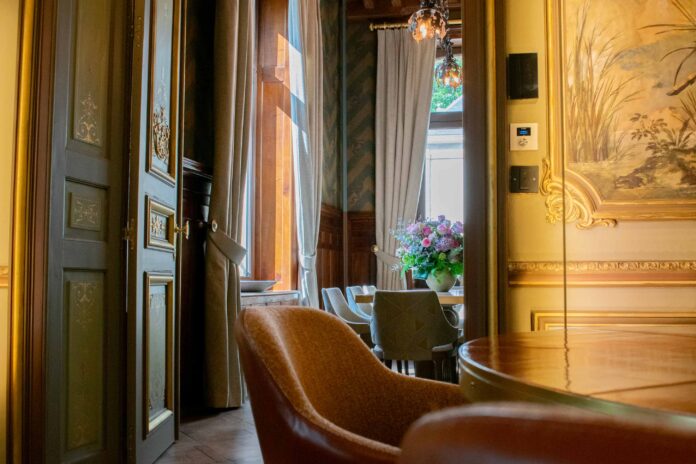Nestled in the heart of Luxembourg City, overlooking the picturesque Pétrusse Valley, the historic Villa Baldauff will reopen its doors on 16 June under a new name: La Villa Pétrusse. But stepping inside is not merely checking in — it is stepping into history.
A place to pause, timelessly
“You almost hesitate to call it a hotel — it’s something quite different. It’s hospitality at its finest.” The idea was never to create just another place to stay. The aim behind the extensive renovation of this 19th-century villa was to evoke the comfort of home rather than the formality of a hotel. The delicate balancing act between past and present has been executed to perfection.
Settled in one of the villa’s three private lounges, Managing Director Stéphanie Raimbault encourages visitors to sit, breathe, and feel the soul of the place. Once inside, time seems to slow down, inviting guests to appreciate the incredible craftsmanship involved in the meticulous restoration. The teams led by interior designer Tristan Auer, architect Jim Clemes, and a host of master artisans have breathed new life into every detail. “Everything — from floor to ceiling — has been restored and elevated,” Raimbault explains.

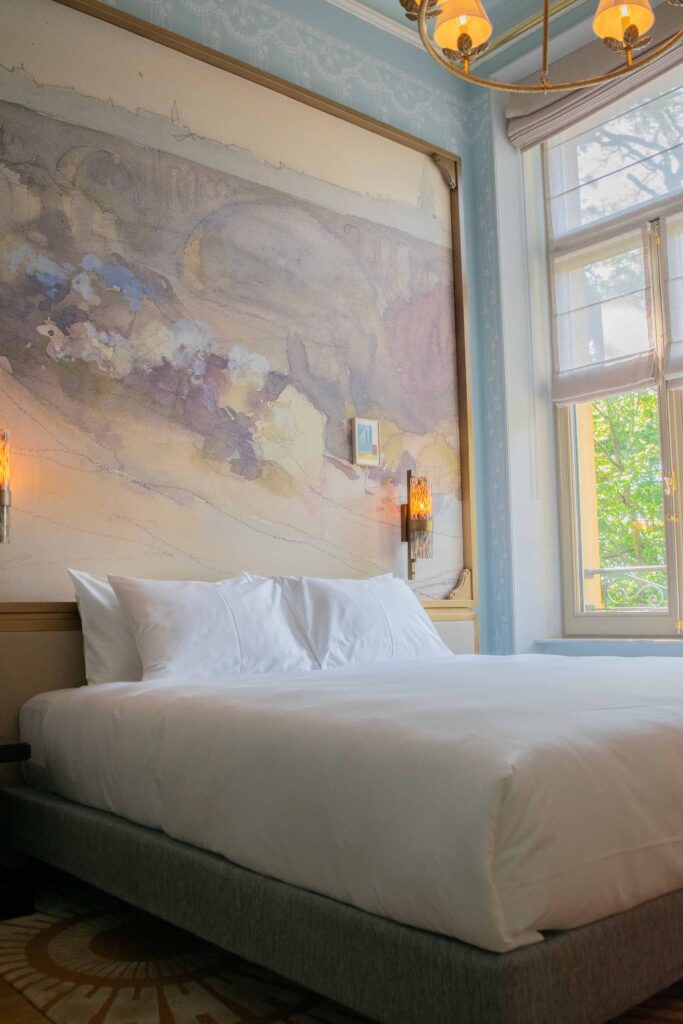
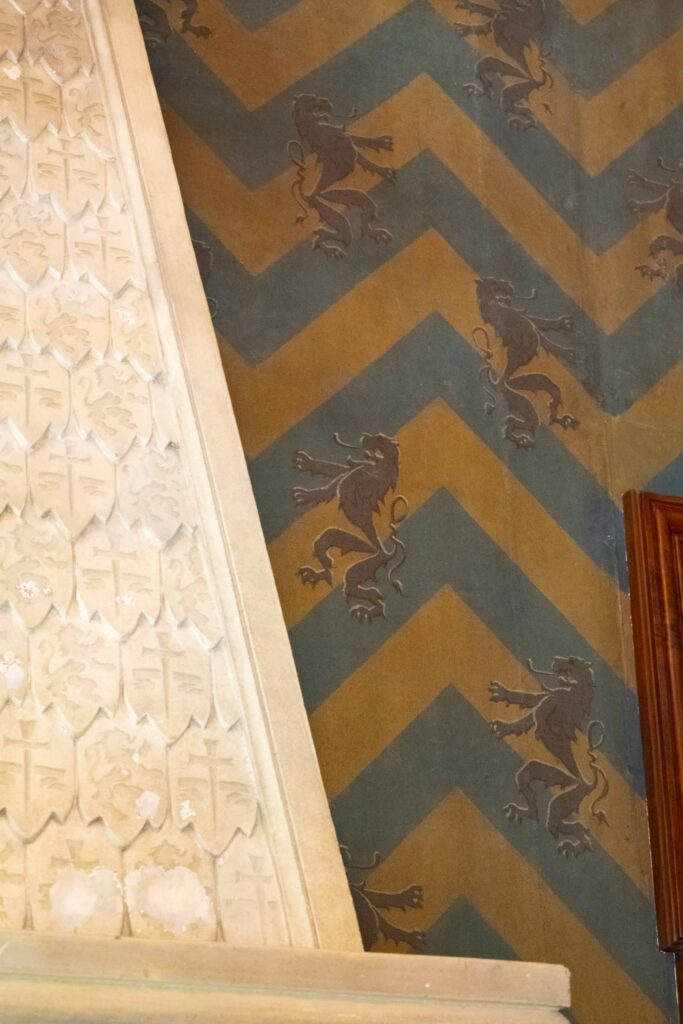
A chapter of Luxembourg’s History
At the press launch of La Villa Pétrusse, Luxembourg historian Robert Philippart was on hand to share the storied past of the house, which has always remained a private residence throughout the years.
Built in 1880 and renamed Villa Baldauff in 1907 after its owners at the time, the house had fallen into disuse for many years. Far from being a drawback, Philippart sees this as a blessing in disguise. “Abandonment can be beautiful — it preserved the authenticity of the place, untouched.”
Bringing the Villa up to modern standards while respecting its heritage was no small feat. “Every stage had to honour the history and safeguard the site’s identity,” he noted. Landscape architect Édouard André — who designed the villa’s century-old gardens — once described the scene as “one of the most picturesque in Europe,” a legacy that had to be protected.
The restoration involved painstaking attention to period colours, reproductions of watercolours by artist Sosthène Weiss, and the creative integration of modern comforts like en-suite bathrooms into rooms never meant to house them — all without compromising their character or accessibility.
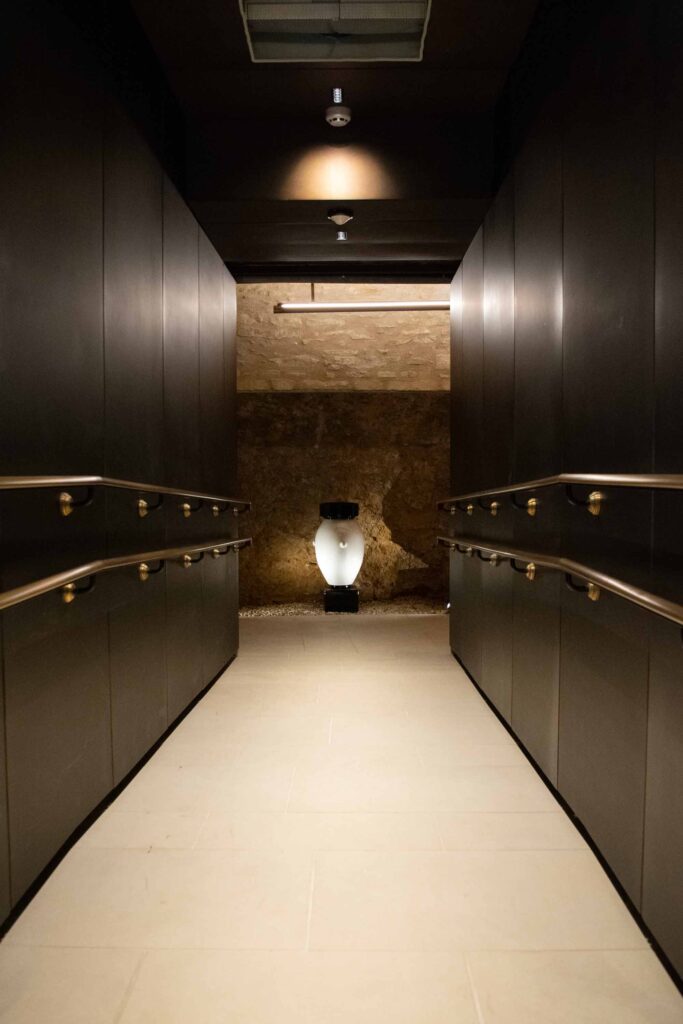
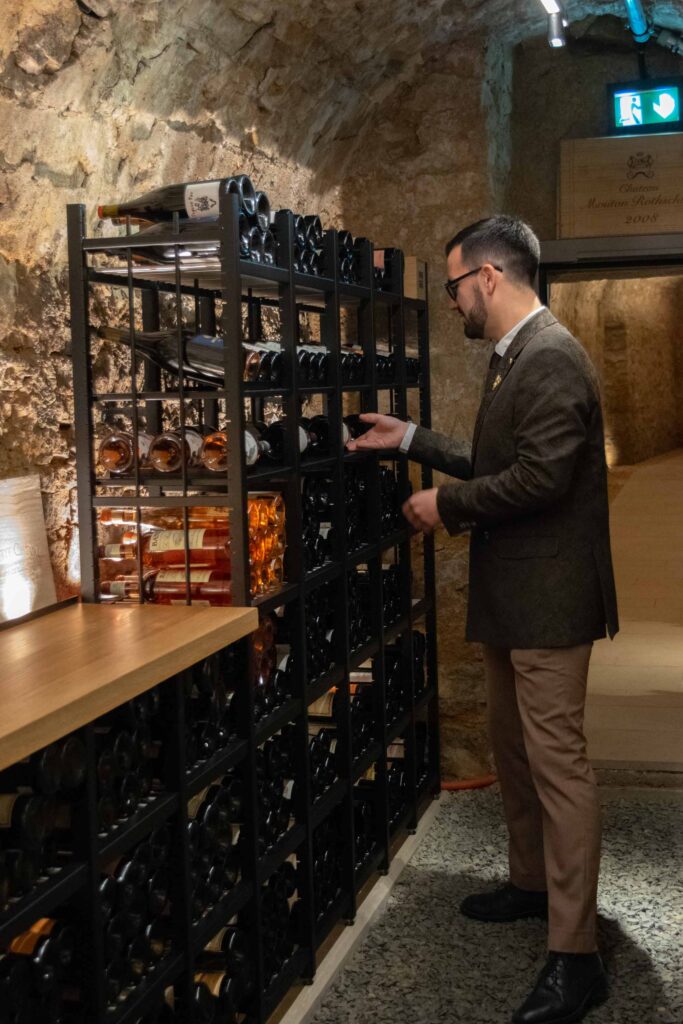
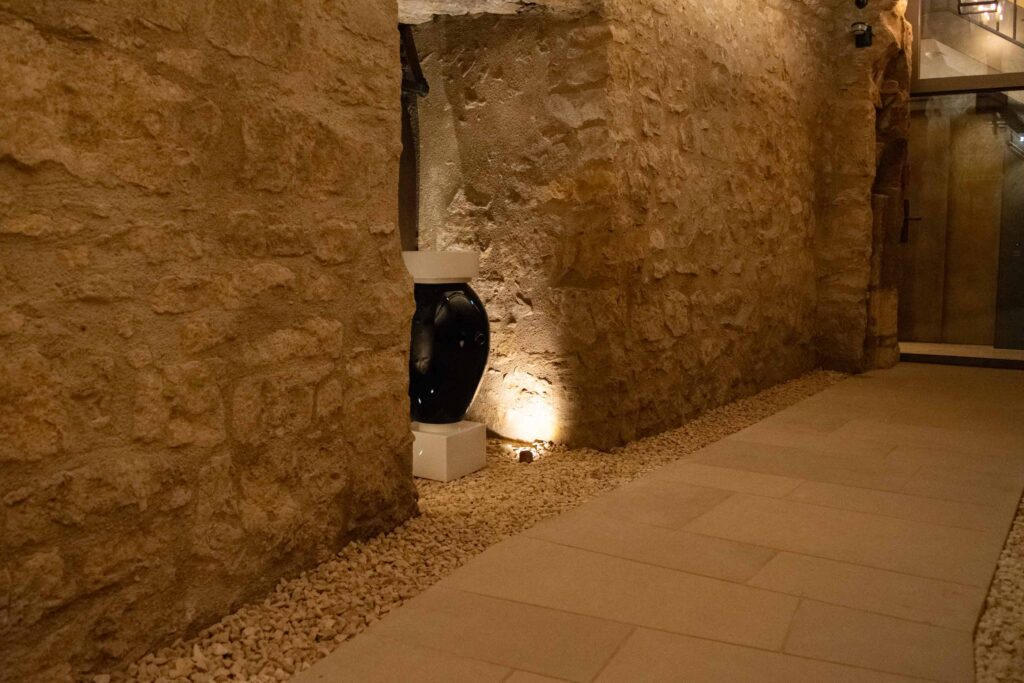
The Villa, the Pavilion, and the Casemates
Spread across two buildings, La Villa Pétrusse offers 22 rooms, including three suites. Some rooms boast sweeping views over the gardens and the valley beyond, while others nestle closer to the garden itself.
The historic suites have been restored with absolute fidelity — even the wallpaper has been preserved. Staying in one of these rooms is like stepping back in time. In one room, a section of the original wallpaper has been left visible to showcase the painstaking work behind its recreation. The colour palette throughout remains true to the villa’s origins.
To document this remarkable journey, photographer Éric Chenal captured every stage of the restoration. Today, a curated selection of his photographs is displayed in the rooms, a quiet tribute to years of dedication.
Guests can move from the main building — La Villa, which houses the restaurant Le Lys and the Bourbon and Marie Thérèse lounges — to Le Pavillon, once the villa’s stables. The original wooden beams have been lovingly restored, lending a warm and authentic charm to the rooms in this wing.
Perhaps most captivating of all, the restoration unearthed a hidden access to the legendary Casemates. This subterranean passage now leads to the villa’s wine cellar, where guests can enjoy unique tastings in the heart of the stone, making for a truly unforgettable experience.
Rooms at La Villa Pétrusse start from €450 per night.

